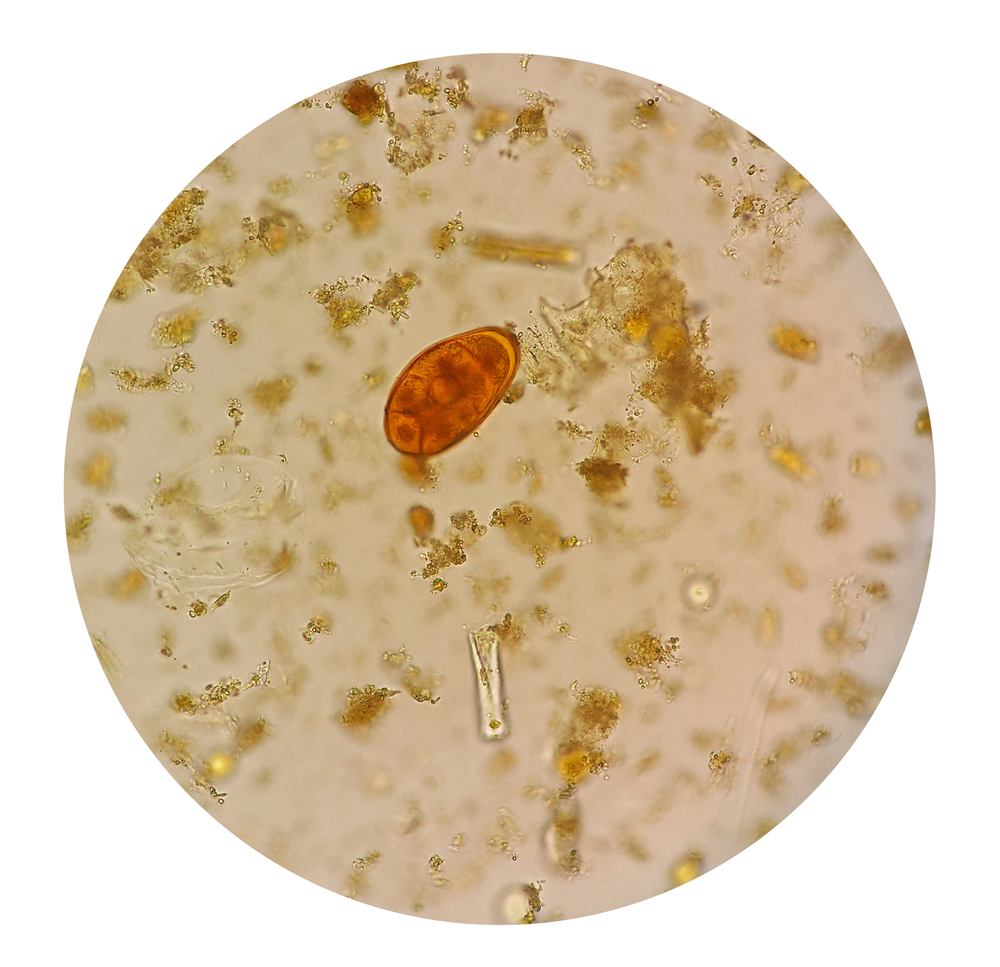


An ova, cysts and parasite tests looks for parasites and their eggs (ova) that may be in your digestive system. It does this by testing a sample of your poo. The test is also called an O&P.
Parasites are tiny life forms that can live and reproduce in the bodies of humans and animals. They most commonly infect your intestines. There are a wide variety of parasites that can infect humans and cause a range of symptoms including diarrhoea, which can be bloody and long lasting with mucus in the stool, also abdominal pain, nausea, headaches and fever. Symptoms may not occur until many days or weeks after exposure to the parasite.
Infections from parasites can occur in Australia as well as overseas. They often come from unpurified water or food that has been contaminated by the parasite eggs, particularly in countries where there is poor sanitation. The most common parasites in Australia are also found worldwide and these include giardia, dientamoeba and cryptosporidium. They can be found in even the most remote and pristine mountain streams and lakes, as well as swimming pools, hot tubs, and community water supplies.
Parasites usually infect the lower digestive tract and can live there for years. If you have intestinal parasites, they will be found in your poo.
Most people who are infected by parasites become infected by drinking water or eating food that has parasite eggs in it. Parasites and eggs from infected people or animals are released into the poo and contaminate any water, food, or surfaces that come into contact with them. This contamination cannot be seen. The food and water will look, smell, and taste completely normal.
In order to diagnose the source of your illness your doctor will ask you questions about your symptoms and your health history as well as any travelling you have done.
Parasitic infections are of particular concern for people who can develop serious symptoms and complications from long-lasting diarrhoea including infants, the elderly and people with weakened immune systems such as those with HIV/AIDS.
Your sample will be sent to a pathology laboratory where it is smeared onto a slide, stained and investigated under a microscope to identify and count any parasites, ova and cysts that may be present. Other tests may be needed to make a diagnosis. These include antigen tests which look for specific proteins on the surface of the suspected parasite and genetic molecular tests to look for the DNA of the parasite.
Treatment may include drugs that target a specific parasite. Some infections disappear naturally over time.
A stool sample that has not been contaminated by urine or water should be collected in a clean container. The sample should either be taken to a laboratory within an hour after collection or transferred into special transport vials containing preservative solutions.
To improve the chances of detecting a parasite it may be necessary to collect multiple samples at different times on different days because parasites are shed intermittently and may not be in the stool or other samples at all times.
If Schistosoma haematobium infection is suspected, urine needs to be collected. This should be the end part of urine that you are passing - known as terminal void, not midstream urine - and it is recommended you collect it around midday (10am - 2pm).
Any preparation?
None required
If no ova or parasites are seen in the samples,
If ova and parasites are present in the stool samples,
An O&P test detects only those parasites that live in the digestive tract and whose eggs are passed through the stool. For parasites such as pinworms, or blood parasites that cause malaria, other tests are required.
Re-infection from a parasitic infection is possible if you are exposed again, for example through a family member who has an asymptomatic parasitic infection and continues to shed the organisms and re-infects others.
The choice of tests your doctor makes will be based on your medical history and symptoms. It is important that you tell themeverything you think might help.
You play a central role in making sure your test results are accurate. Do everything you can to make sure the information you provide is correct and follow instructions closely.
Talk to your doctor about any medications you are taking. Find out if you need to fast or stop any particular foods or supplements. These may affect your results. Ask:
Pathology and diagnostic imaging reports can be added to your My Health Record. You and your healthcare provider can now access your results whenever and wherever needed.
Get further trustworthy health information and advice from healthdirect.